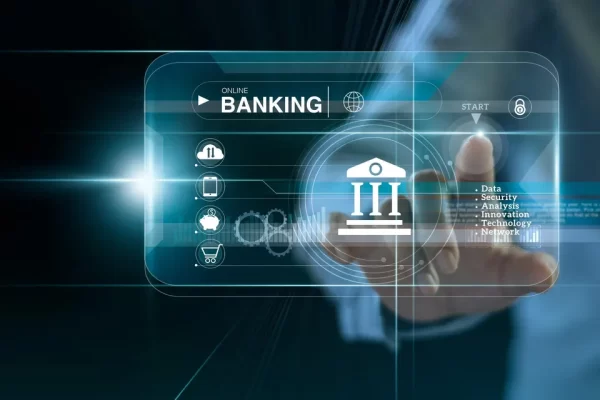Today, the emergence of fintech startups and the shift towards digital banking have reshaped the financial landscape. To thrive in this dynamic environment, financial institutions must adopt cutting-edge banking software solutions. In this article, we explore the key functions, types, and trends in banking software, highlighting its pivotal role in enhancing financial stability.
BANKING SOFTWARE OVERVIEW
Understanding the contemporary digital banking landscape is crucial to grasp the significance of banking software solutions. The trends shaping the future of banking software include a proliferation of communication channels, a transition to digital banking solutions, the integration of artificial intelligence, the rise of digital-only banks, and advancements in software development techniques.
The increasing demand for digital services has driven banks to invest in diverse communication channels, including mobile applications, web apps, and digital assistants. The move towards digital banking solutions eliminates the need for face-to-face interactions, making services more accessible and convenient. Artificial intelligence, particularly machine learning and cognitive computing, is expected to boost revenue for banks by providing personalized and efficient services.
The emergence of digital-only banks represents a paradigm shift, eliminating the need for physical branches and reducing maintenance costs. Improved software development practices, focusing on code quality and data processing capabilities, further contribute to the evolving landscape of software in banking system.

KEY FUNCTIONS OF BANKING SOFTWARE SOLUTIONS
Banking software solutions encompass a wide array of functions designed to meet the diverse needs of financial institutions. Common features found in top banking software systems include:

- Customizable interfaces
- Data management and history tracking
- Documentation
- Online lending
- Financial instruments and investments
- Live customer support
- Mobile versions
- Online deposits
- Self-service options for clients
- Online payments and bills
- Transaction processing
Custom development teams, such as Insoftex, can tailor solutions to specific business goals, offering a competitive edge in a rapidly changing market.
TYPES OF BANKING SOFTWARE
- SMS Banking Software
SMS banking software caters to clients who may not own smartphones. It offers essential features such as recharging mobile accounts, paying bills, and accessing transaction information through simple text messages. The simplicity of commands is crucial for user-friendly interactions.
- Merchant Banking Software
Designed for businesses rather than individuals, merchant banking software focuses on collecting, processing, and storing information related to portfolios, funds, and trade histories. Security is paramount, ensuring that data remains confidential without compromising workflow efficiency.
- Investment Banking Software
In the investment banking niche, software solutions aim to enhance internal workflows and service quality. With a focus on handling complex transactions and processing large datasets in real-time, investment bank software systems contribute to improved market performance.
KEY SOFTWARE SOLUTIONS USED IN BANKING AND FINANCIAL SERVICES
- Core Banking System Software
The backbone of financial institutions, core banking systems software provide infrastructure and functionality for managing operations. Popular systems include FIS, Fiserv, Temenos, Mambu, and Finastra.

- Customer Relationship Management (CRM)
CRM software centralizes customer data, enhancing interactions and tailoring services. Widely used options include Salesforce, Microsoft Dynamics, and HubSpot.
- Anti-Money Laundering (AML)
AML software identifies and prevents financial crimes through algorithms and machine learning. Notable solutions include NICE Actimize, SAS AML, and FICO AML.
- Electronic Payment Systems
Popular for quick and secure payments, electronic payment systems include PayPal, Venmo, Stripe, and Zelle.
- Loan Origination
Automating loan application processes, loan origination software includes Encompass, Lending Pad, Centrex, and Calyx.
6. Business Intelligence (BI)
BI software analyzes large datasets for insights, featuring tools like Tableau, Microsoft Power BI, and QlikView.
7. Fraud Detection
Fraud detection software, including IBM Trusteer, RSA Adaptive Authentication, Riskified, and Kount, uses advanced algorithms to identify and prevent fraudulent activities.
CONCLUSION
The adoption of innovative software solutions empowers financial institutions to automate processes, enhance customer experiences, and reduce costs. As the industry continues to evolve, leveraging these tools becomes imperative for ensuring improved profitability and long-term sustainability. Stay ahead of the curve by choosing the right banking software solutions to navigate the digital future of finance.







